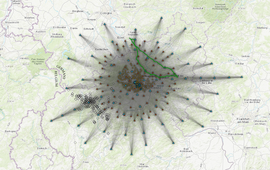DEGREE - Digital twin for assessing the exploration potential of geo-resources: Eifel geothermal depth anomaly
In order to increase the probability of success of geothermal drilling, DEGREE is creating a digital twin of the subsurface in the Eifel region. We are developing a service to generate seismological data products that enable a more direct investigation of the subsurface directly at the data center.



![[Translate to English:] Polarin](/fileadmin/_processed_/4/c/csm_northpole_Polarin_Sens_d2fd3e7035.png)




![[Translate to English:] Himalaya](/fileadmin/_processed_/6/8/csm_GFZ_project_Banerjee_small_Fig2_c446e0161e.jpeg)

![[Translate to English:] Myanmar](/fileadmin/_processed_/6/7/csm_Myanmar_small_yanling_20920d33d6.jpeg)